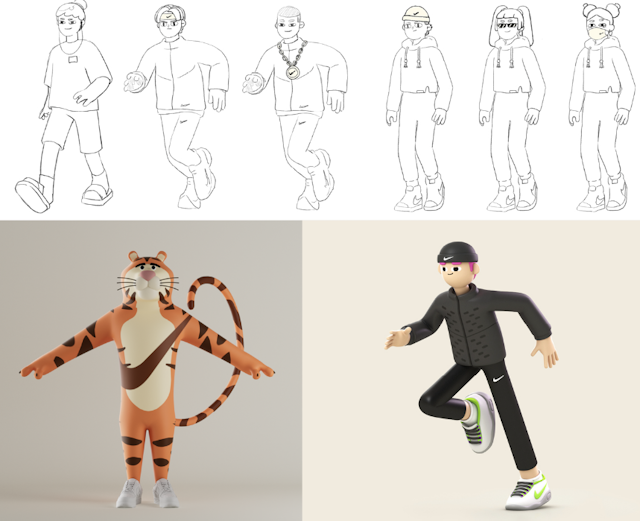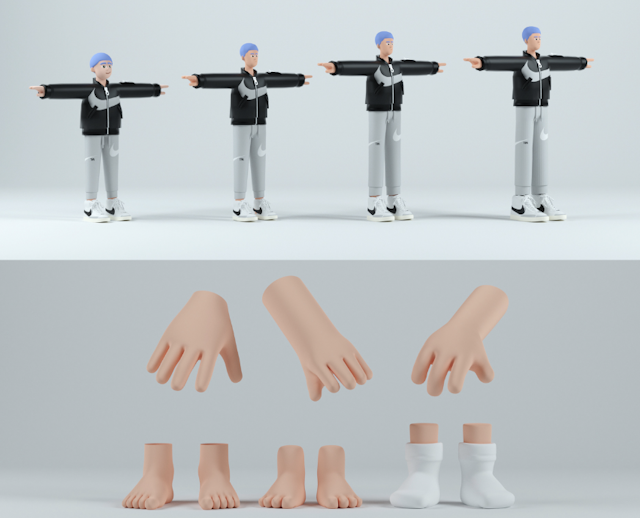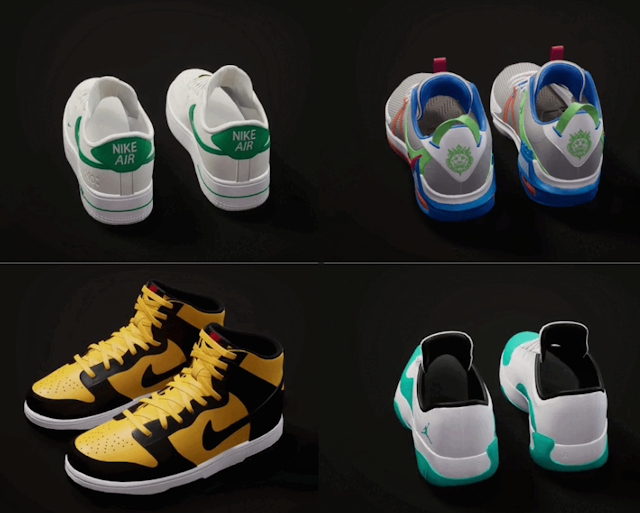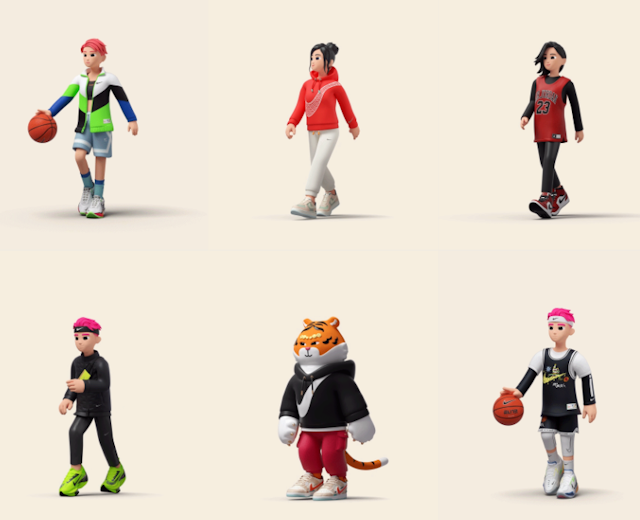Inside Nike’s year-long project to create 100 shopping avatars
The work delivered a 75% uplift in e-commerce engagement levels compared with previous digital activations.
Over a year ago, sports giant Nike set out to redefine its membership program and bring a new experience to shoppers on the Chinese e-commerce platform Tmall. At the core of its plan were avatars, or ‘Athletars’ as it calls them – 3D digital representations of people as they engage with the brand.
These were something Nike had dabbled with two years prior. And while the originals were nice, they were static, not scalable and certainly weren’t made to be handled by different studios. The brand needed them to have a more premium look and feel, so tapped into the expertise of production studio Final Frontier.
The production agency’s executive producer, Gustavo Karam, tells The Drum: “The goal of this project was to create a system that could be transplanted to different pipelines, different agencies.” He likens it to branding but with avatars.
“The new system had to work with all possible future Nike outfits and be adaptable to different types of characters and personalities. We were essentially laying the foundations for a long-running campaign.”
Advertisement
Karam’s team used three different types of software to create the avatars, which gives Nike the base of the 3D characters for future use. “Obviously, we didn’t create the project thinking of a handover but the assets needed to be transferable.”
The agency enlisted four different artists, each with very distinctive and authoritative styles, and within a week had a large range of character designs, 2D studies and even a few 3D developments. Jaime Alvarez would be the ultimate lead designer on the project.

Usually, when creating avatars, there’s no need to give much thought to what’s underneath the clothes. For this project, however, every single detail was crucial as users would be swapping in and out various apparel. “The feet had to be a little smaller than a normal proportion because, otherwise, the shoe would become enormous and the character would look weird,” adds Karam. “There were so many technical details.”
Over the course of the next few months, the team created the first 40 avatars. By the end of the year, they had made 100. Karam equates this to the design and build of 30% of a video game.
Advertisement
In the beginning, Karam says they spent a lot of time looking for a “genderless” character, which is something they will explore more in the future, but the male and female characters they did create fell into four initial categories: running, street, dance and Chinese New Year.

The creatives looked at every part of the body, down to the tiniest detail, experimenting with everything from number of fingers to anatomic proportions and hairstyles since audiences had to relate to them. The most difficult part, says Karam, was giving them their cool and casual walk, with subtle movements that are meant to seem natural always being a struggle in animation. “They are on the edge of being caricatures and realistic. We used motion capture. We had a fantastic crew of dancers from Buenos Aires and it gave the characters a lot of personality.”
Chinese New Year, Single’s Day and the 618 shopping festival are all significant dates in the calendar and Nike had plans to show up in a big way during each. An eventual launch on Tmall meant ‘gamifying’ the avatars.

“We had to think about how we could do real-time render and let the customers customize their avatar directly on the platform. We didn’t know what it could handle. It was all about how many polygons, size of files, how the lighting would be interpreted on Tmall.”
It took the team two months, going back and forth with Nike, to create a protocol that worked. And as the project progressed, they even got basketball stars Luka Doncic and Guo Ailun on board to give their likeness, creating toys to bring the avatars into the physical world. The collectibles, which are sent as gifts alongside purchases, have detachable and interchangeable parts similar to their digital counterparts.
Suggested newsletters for you
Karam is most proud of the shoes they were able to create for the avatars alongside a team in Ukraine. “Nike is all about the shoe. It will never allow you to show a shoe that is not awesome.”
Production was another challenging aspect of the project. Working with different studios around the world, each had its own processes and pipeline, meaning the design phase had to be meticulous. In spite of this, they were able to design, model, rig and animate 100 perfectly matching characters.

To promote the avatars, a film was produced by R/GA Shanghai. The short saw the avatars animated in an extended sequence for the first time. “Our generation is used to avatars,” says Karam. “If you look at Nike’s numbers, this was a very successful campaign.”
The project came at the time of a metaverse boom, which has obviously died down, but undeterred he says: “Avatars are the most relevant part of that. Lots of brands are using avatars as a way to communicate with our generation of buyers and shoppers.”
Results for Nike have been positive. With over 233,000 possible avatar combinations, the brand has seen a 475% uplift in member signup versus the previous year and a 75% uplift in engagement versus previous digital activations.
According to the sportswear company, this is just the beginning. It plans on growing the platform and introducing a “bigger, more gamified shared world in parallel with the growing tech capabilities”.

